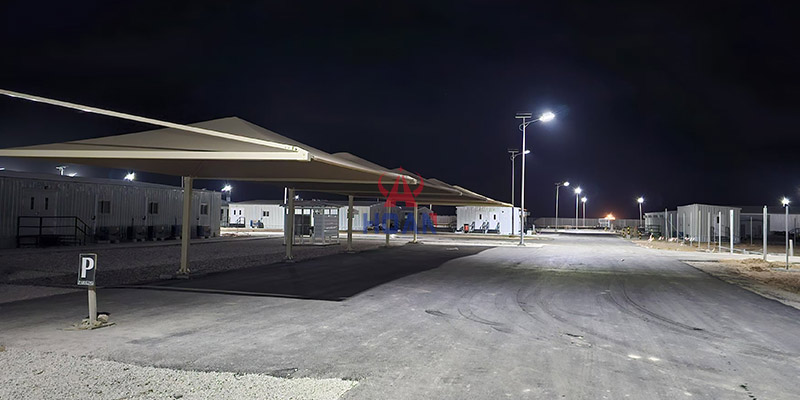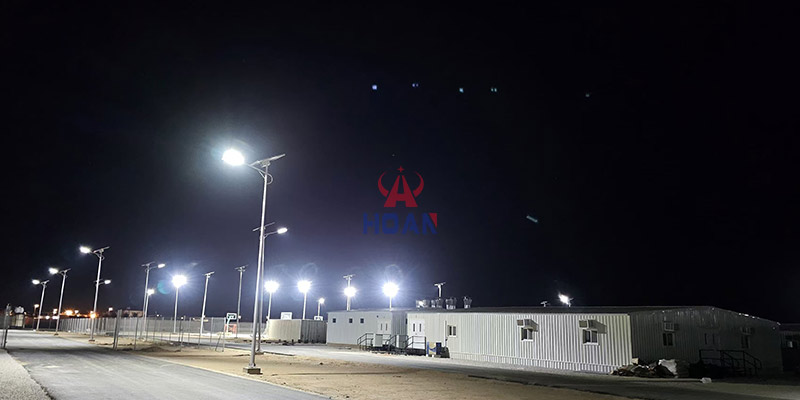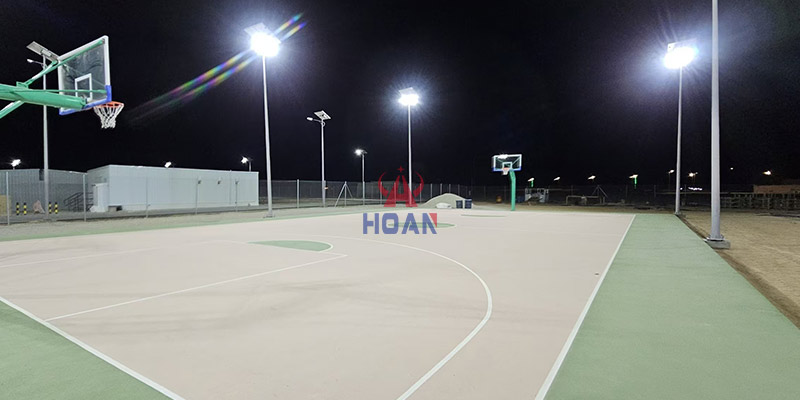Solar streetlights play a crucial role in urban and rural lighting, with both environmental and cost-effective advantages by virtue of being powered by renewable energy. It not only effectively reduces power consumption, but also reduces carbon emissions, fuelling sustainable development. Proper maintenance is the key to ensure that solar street lights play their maximum performance, which can prolong the service life, ensure stable lighting, and provide continuous safety for pedestrians and vehicles.
When carrying out solar street light maintenance, you must do a good job of personal protection. You need to wear gloves, goggles and high-visibility work clothes to prevent scratching, stabbing or eye injury due to splashing parts debris during operation. If work at height is involved, use stable ladders or lifting equipment and ensure that they are in a safe condition to avoid falling accidents.
Always switch off the power supply to the streetlight or disconnect the battery before checking the electrical components to prevent the risk of electric shock. At the same time, avoid carrying out maintenance work in rainy days or extreme weather conditions to prevent leakage of electricity and other safety issues caused by wet conditions, and to protect the lives of maintenance personnel and equipment safety.

Cleaning frequency should be determined according to the actual environment. Under normal circumstances, every 3 - 6 months need to be cleaned; if in the dusty, heavily polluted or bird activities in the area, you need to increase the frequency of cleaning.
To clean, use a soft-bristled brush or microfibre cloth with mild soapy water to gently wipe the surface of the solar panels to remove dust, leaves, bird droppings and other dirt. Afterwards, rinse it off with water and dry it thoroughly to avoid water residue. At the same time, do not use rough cleaning tools, so as not to scratch the panel surface, affecting the efficiency of light absorption.
Wipe the Solar LED Street Lights housing with a damp cloth to remove surface dirt and ensure that the LED lampshade and vents are not blocked by debris. Regularly check the inside of the lamps and clean up insect nests or cobwebs to prevent the normal operation of the street lamps from being affected by heat build-up.
Conduct regular visual inspection of solar panels to check for cracks, delamination or yellowing. If the panel is found to be damaged, it will affect the power generation efficiency and needs to be replaced in time.
Use a multimeter to measure the panel voltage under direct sunlight and compare it with the specifications provided by the manufacturer. If the output voltage drops by more than 10%, the panel performance is degraded and should be further evaluated or replaced.
Maintenance methods vary for different types of batteries:
Lead-acid batteries: Check the electrolyte level regularly, and in the case of open-ended lead-acid batteries, use distilled water to replenish the level. At the same time, use baking soda solution to clean up the corrosion of the battery terminals to maintain a good connection.
Lithium-ion batteries: Check the battery for bulging, leaking or loose connections. Ensure that the charge controller is calibrated accurately and avoid overcharging to extend battery life.
Use a load tester to check the battery capacity and replace the battery if it does not meet the specified endurance (typically 3 - 5 years for lead-acid batteries and 5 - 10 years for lithium-ion batteries).
Test that the LED light turns on automatically at dusk and off at dawn. If it flickers, is not bright enough or does not light up, replace the LED lamp and make sure that the power and voltage of the new lamp matches that of the fixture.
Check that the wiring connections are secure and not corroded, worn or broken. Tighten loose connections and replace damaged cables to prevent power transmission loss or short circuit failure.
Confirm that the charge controller display shows normal (such as charging status, battery voltage and other information). Clean the controller vents to prevent overheating. If the controller cannot regulate charging and discharging properly, it needs to be replaced in time.

Before snowfall, thoroughly clean solar panels and lamps to ensure maximum sunlight absorption. In cold areas, check the insulation measures of the batteries and add insulation materials if necessary to prevent the batteries from being damaged due to low temperature.
Remove leaves, branches and other debris accumulated during the winter, and check whether the street lamps are damaged due to bad weather such as storms and snowstorms (e.g. loose mounting brackets, water ingress into the lamps, etc.). Test the performance of the batteries to ensure that they can work properly in summer when there is sufficient light.
Under the premise of ensuring safety, dismantle the luminaire housings and carry out deep cleaning of the internal components to remove dust accumulation. Lubricate the hinges and other movable parts of the adjustable street lamps to prevent rusting and ensure smooth adjustment of the street lamp angle.
Common Problems
Possible reasons include dead batteries, LED light failure, circuit breaker tripping or photocell misplaced. Corresponding solutions are: replace the battery, test or replace the LED lights, check the line connection, recalibrate the photocell.
Usually caused by dirty solar panels, insufficient battery power or charge controller failure. The problem can be solved by cleaning the solar panel, testing the health of the battery, and replacing the charge controller.
The cause may be damaged seals, cracked shells or blocked drainage holes. Solutions include replacing the seal, repairing or replacing the housing, and cleaning the drainage channel to avoid internal rust and electrical damage caused by water ingress.
Detailed records of maintenance history can help identify recurring problems, rationally schedule component replacement, and provide valid proof for warranty when needed. At the same time, a complete maintenance record is also necessary to meet local regulations or public lighting system requirements.
Record the date of maintenance, specific maintenance work (e.g., cleaning panels, replacing batteries, etc.), serial numbers of replacement parts, and problem resolution. At the same time, record the battery voltage, panel output power, LED light performance and other data for subsequent maintenance and fault analysis to provide reference.

If the streetlights are not performing well, consider upgrading to more efficient solar panels or lithium-ion batteries to enhance the ability to work in low-light environments. In addition, install motion sensors or remote monitoring systems to achieve intelligent management, optimise energy usage and simplify the maintenance process.
Recycling and Disposal
When solar street light components reach the end of their service life, they should be properly disposed of through certified recycling centres, especially batteries and panels, in order to reduce the pollution of the environment and practice the concept of environmental protection.
Regular cleaning, component inspection and seasonal maintenance are the keys to prolonging the service life of solar street lights. Timely troubleshooting and standardised recording of maintenance information can ensure the continuous and stable operation of streetlights and safeguard the safety of road lighting. For complex maintenance work, professional help can be sought. Through scientific maintenance of solar street lights, not only can long-term cost savings be achieved, but also contribute to the cause of environmental protection.